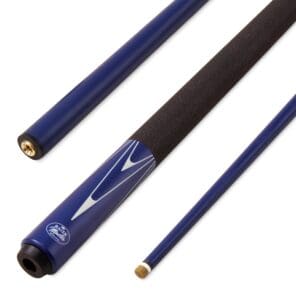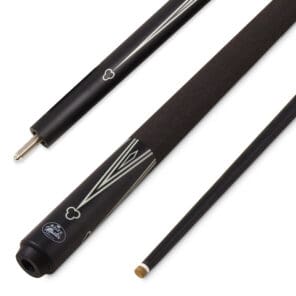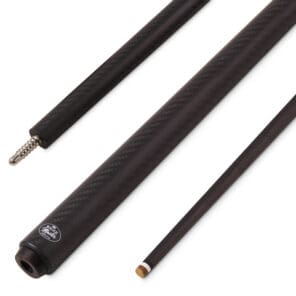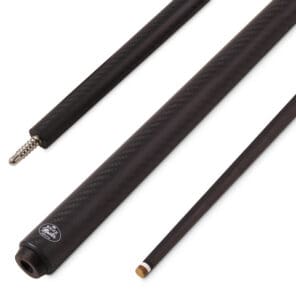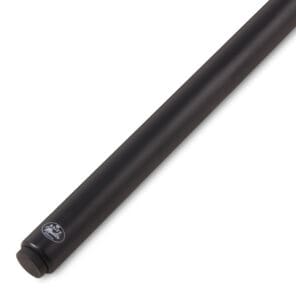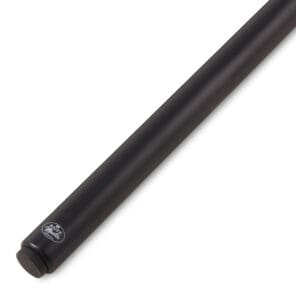Carbon Fiber and Fiberglass Snooker Pool Cues
The Evolution of Cues
The pool cue’s journey is a fascinating one, evolving from a simple tool to a sophisticated piece of equipment. Early “cues” were actually maces, featuring a large head for shoving balls. By the late 1600s, however, the slender cue we recognise today emerged, offering greater precision and control. Over the centuries, materials and design have continued to improve. While wood, primarily ash and maple, remains popular for its natural properties, the 20th century saw the introduction of fiberglass and carbon fiber for increased consistency and performance. Additionally, the one-piece cue gave way to the two-piece screw-together design, offering much-needed portability. Beyond functionality, cues have become canvases for artistic expression, reflecting the growing appreciation for the game and its equipment.
What is Cue Ball Deflection?
The term deflection is used frequently in cue sports and for good reason. But what is this phenomenon, and how does it affect gameplay in cue sports? Deflection refers to the cue ball moving off its intended path when struck by a cue, due to the application of sidespin. Simply put, imagine a straight line running through the centre of the cue ball from top to bottom. The cue ball deviates from its path every time it is struck outside this straight line.
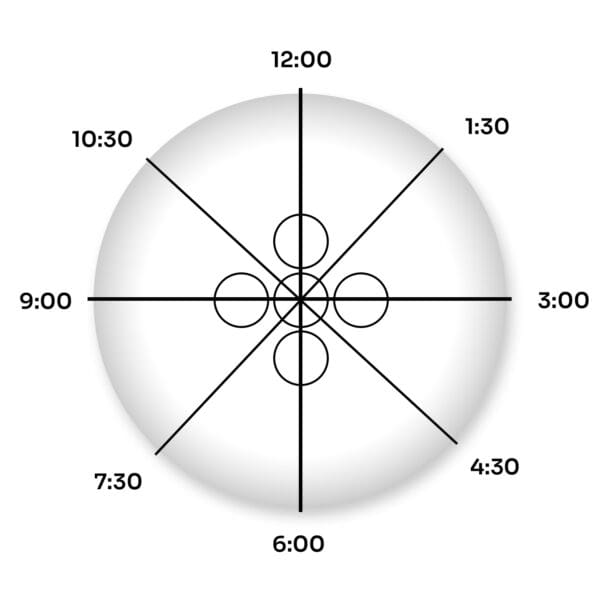
When the cue ball is struck on the left, it veers to the right, and when it is struck on the right, it veers to the left. This can happen in two ways:
- A player deliberately applies side spin on the cue ball to position it for the next shot.
- A player unintentionally applies sidespin by striking off the centre, either due to bad alignment or their technique not being straight.
The majority of missed pots occur due to sidespin being applied to the cue ball, whether intentionally or unintentionally. Deflection has long been attributed to the wooden cue shaft vibrating upon contact with the cue ball, sending the cue ball off course. To compensate for deflection, players have to adjust their aiming when attempting a shot with sidespin. A straight pot with right-hand spin would require a player to aim slightly to the right of where they’d normally aim, and vice versa. Potting is difficult enough without sidespin, prompting the need for a solution to simplify an already complicated game.
The Solution to Deflection
The invention of the low-deflection shaft revolutionised the game by reducing unwanted cue ball deflection, leading to more accurate shots. Lower-deflection cues mean players don’t need to compensate as much, increasing the accuracy of their shots. Carbon fiber and fiberglass cues are stiffer, which means they offer less deflection compared to wooden cues. Carbon fiber is stiffer than fiberglass, which means it offers the lowest deflection.
Carbon Fiber Cues
Carbon fiber, also known as graphite fiber, is renowned for its strength and lightness. Composed entirely of carbon atoms, it boasts strength five times greater than steel. This translates to exceptional resistance to temperature changes and warping, a common issue with traditional wooden cues. Carbon fiber shafts have revolutionised the billiards world as much as any invention since the leather tip. While the leather tip, perfected centuries ago, introduced spin to the game, carbon fiber shafts have dramatically simplified its mastery.
Carbon fiber cues, with their stiff shafts, offer the lowest possible deflection on the cue ball, allowing a player to aim where they normally would when using sidespin. It also mitigates deflection from unintentional side spin on the cue ball, thereby cancelling slight errors in a player’s technique. Through extensive research, top manufacturers have harnessed the unique properties of carbon fiber to create the most consistent, high-performing, and durable shafts ever seen. Similar to the leather tip’s impact, this technology unlocks new levels of cue ball manipulation through spin, enhancing the enjoyment for players of all skill levels.
Fiberglass Cues
Fiberglass, made from plastic reinforced with glass fiber, is a cost-effective and reliable choice for players seeking an improvement over traditional wooden cues. While not as revolutionary as the jump to carbon fiber, fiberglass cue shafts offer a significant advantage over traditional wooden cues. Fiberglass boasts lower deflection and superior resistance to warping and denting compared to wood, making them ideal for players in environments with fluctuating temperatures or those prone to accidental bumps. Additionally, fiberglass cues often come at a more affordable price point than their carbon fiber counterparts, making them a popular choice for beginners and casual players who still desire improved consistency and durability compared to standard wooden cues.
Baize Master Limited Edition Carbon Fiber and Fiberglass Cues
Cue & Case is proud to unveil the Baize Master Limited Edition Fiber range, featuring a selection of cues crafted from premium carbon fiber and high-performance fiberglass. They feature tip size choices of 8.5mm, 9.5mm, 9.75mm, and 10.5mm, catering to both Snooker and English Pool. These cues are a great starting point for cue sports enthusiasts to venture into a playing experience different from wood. Low deflection cues have been the talk of the town in the world of cue sports, and Cue & Case presents the perfect opportunity to finally get your hands on one!

